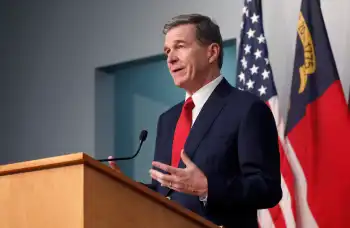The new face of harvesting
The mixed farming operation they run near Shelburne, Ont., raises cash crops and beef cattle and it even produces maple syrup. Now, they are adding wind to their inventory.
Mr. Kidd has been interested in wind as a renewable energy source for some time, seeing in it the potential to offset the fluctuations that are a part of the agriculture business. He researched his options and he did not like the leasing arrangements that tend to be the norm when it comes to farmers entering the wind business. Typically, farmers lease a portion of their land to developers who benefit from the revenues.
And then Mr. Kidd came across 401 Energy, a company based in Markham, Ontario, that seeks to develop renewable energy while keeping the family farm in the family.
And, as a family, the Kidds are hoping to be operating a wind turbine and taking part in Ontario's Feed-In Tariff program, the first guaranteed, comprehensive pricing structure for renewable electricity production in North America.
"This will give us a steady revenue stream that can help supplement our family business while allowing us to continue to focus on agriculture," says Mr. Kidd.
Paul Boreham, president of 401 Energy, believes the common lease arrangement with farmers is not a true partnership. Just two generations removed from the family farm, he decided to create an alternative that would help keep farms in the family and thriving.
"I came up with the proposition that the primary stakeholder is the land owner and nine times out of 10, that's a farmer," says Mr. Boreham.
He asked himself how he could ensure that the primary stakeholder gets the majority of the benefit? The answer was to give farmers a controlling stake in each project. 401 Energy's wind farms are 51% owned by the farmer.
"What keeps a farmer from getting into projects like this? A lack of knowledge of the industry, access to engineers, the science, the applications," says Mr. Boreham.
"I packaged it all up. You cover the soft costs and we'll arrange the rest of the financing, the environmental assessments and we will order the turbines. You get 51% and we'll take 49%." 401 Energy now has 10 projects in the works and should have its first wind farm operating in 2010.
Mr. Boreham believes that the FIT program, which is administered by the Ontario Power Authority, favours community programs like the ones it is backing. "We earn a better rate and the farmers gain access to another very significant revenue stream. It's their land, I'm only the tenant. It's their business, their community and their legacy to their children."
From her vantage point as manager of policy and communications at the Ontario Sustainable Energy Association, Jane Story says the co-operative model for wind farms is a good way to gain acceptance by the larger community.
"People often feel they are imposed upon by large industrial developers, whereas if the project is owned in part by the community the benefits are felt directly in the community and the community has more control," says Ms. Story.
"Studies show that more jobs are created, farmers can make substantially more money from a wind farm than by leasing their land, and there is a greater acceptance of wind power in general."
OSEA knows first-hand what a difference public support can make to getting a renewable energy project off the ground. The organization was born out of an effort to install a wind turbine down on Toronto's waterfront that is owned by a co-op that is the result of a partnership between Toronto Hydro and WindShare.
She believes that the FIT program is conducive to furthering community projects and that these projects are the way forward in terms of gaining the acceptance of communities.
"Farmers are in the forefront of the energy revolution because the farmers have the land," Ms. Story says. "They are uniquely set up to lead the way to renewable energy."
And the FIT program is helping them take that lead. In fact, Mr. Boreham was at a financial forum for the American Wind Energy Association in New York in October, where the reaction confirmed his feelings about the FIT program and his business model.
"Every developer, every supplier, every financial analyst, was there and when they found out I was from Canada, they were all begging to know about our FIT program," he says. "It is the most dynamic program right now to encourage wind energy development in all of North America. We've got the eyes of North America looking at Ontario."
Related News

Tesla CEO Elon Musk slams Texas energy agency as unreliable: "not earning that R"
DALLAS - Tesla CEO Elon Musk on Wednesday slammed the Texas agency responsible for a statewide blackout that has left millions of people to fend for themselves in a freezing cold winter storm.
Musk tweeted that Texas’ power grid manager, the Electricity Reliability Council of Texas (ERCOT), is not earning the “R” in the acronym.
Musk moved to Texas from California in December and is building a new Tesla factory in Austin. His critique of the state’s electrical grid operator came after multiple Tesla owners in the state said they had slept in their vehicles to keep warm amid the lingering power…




